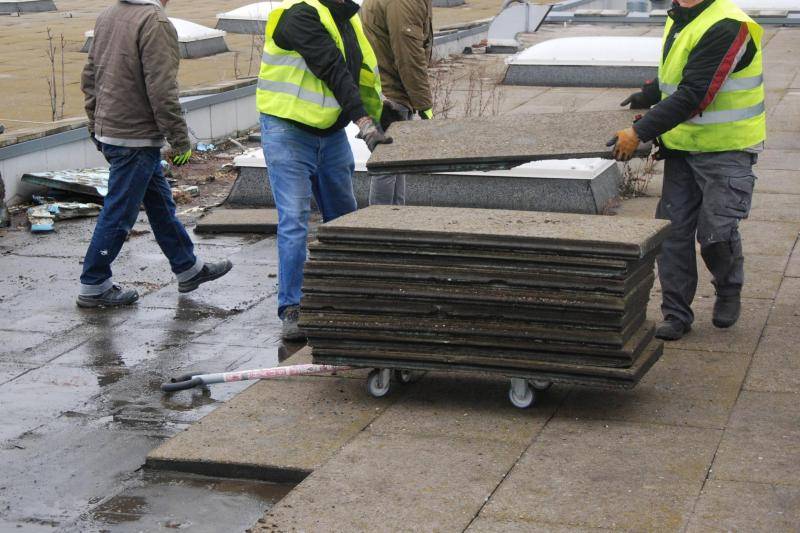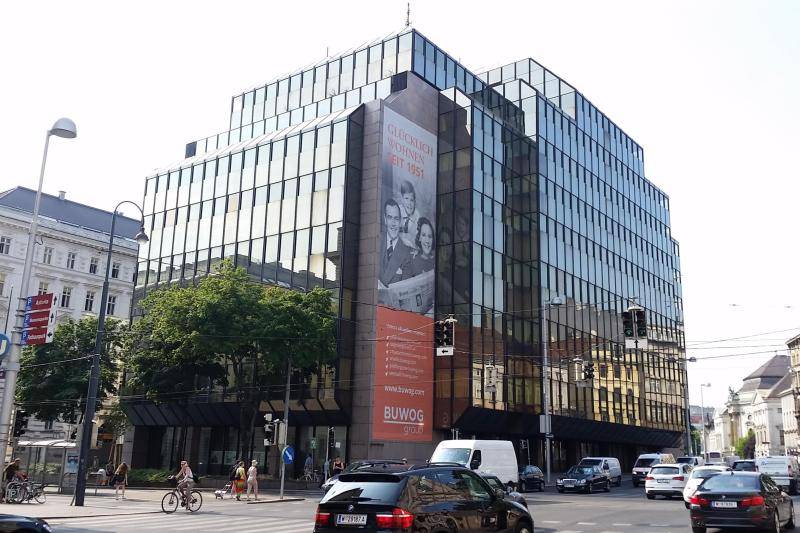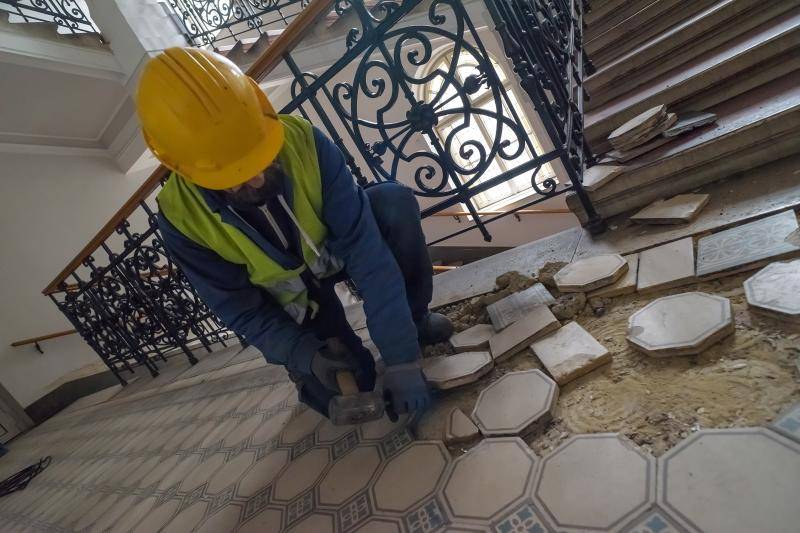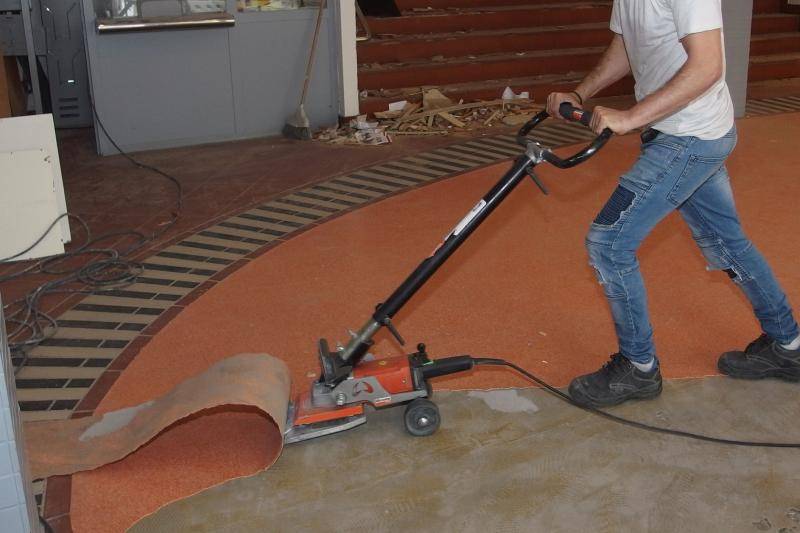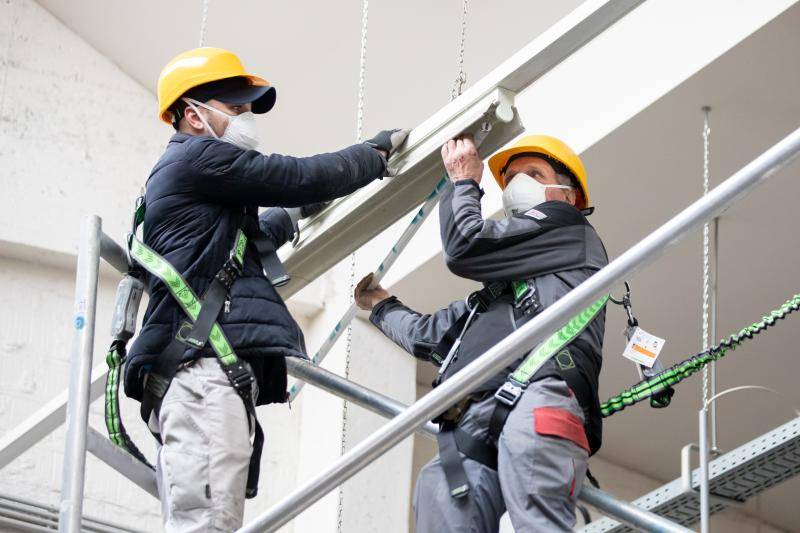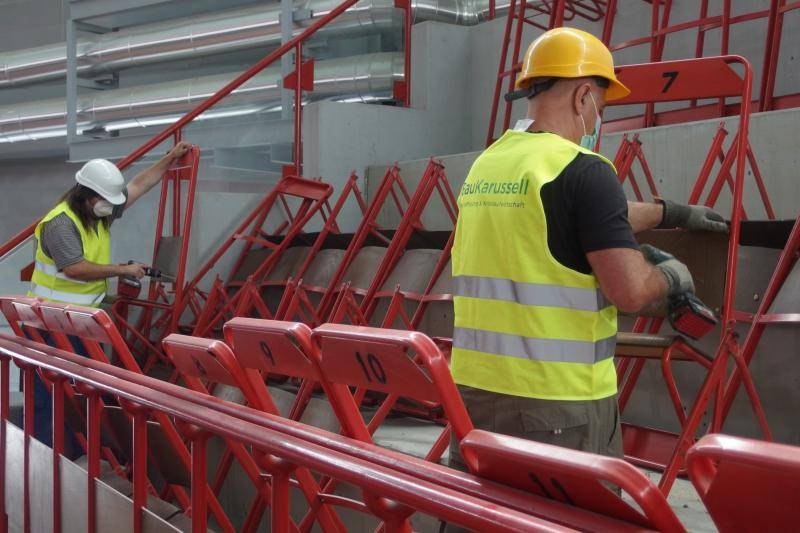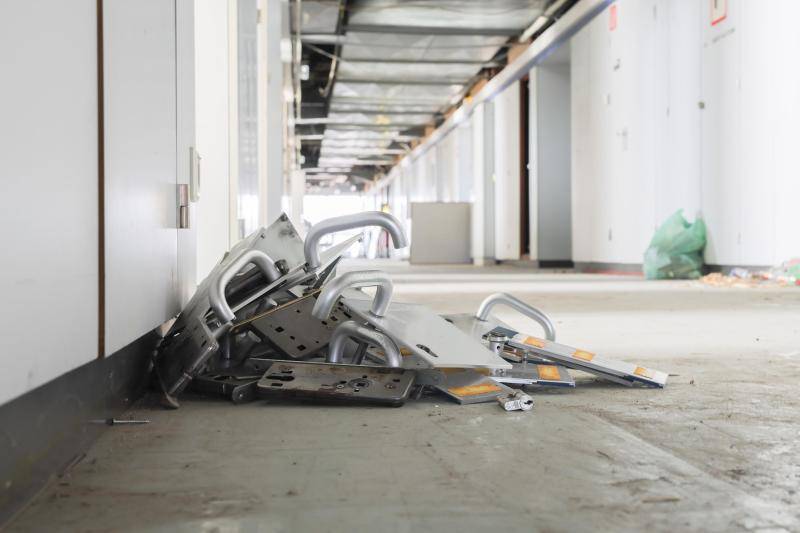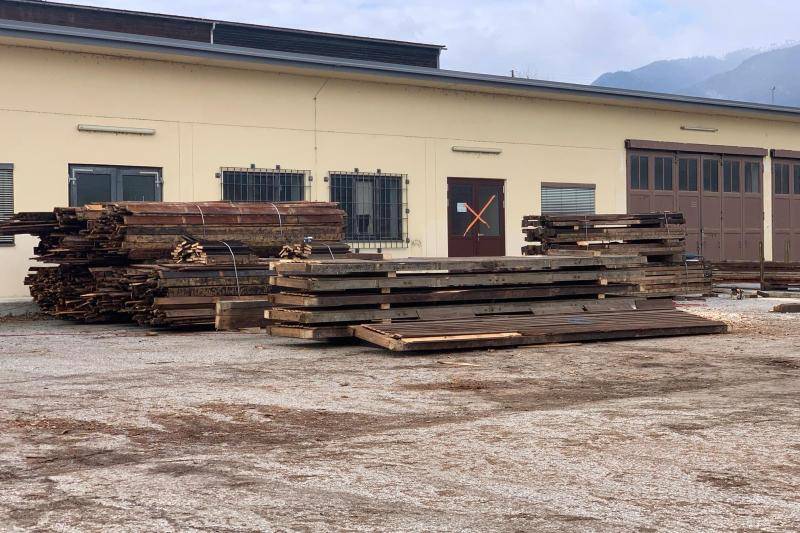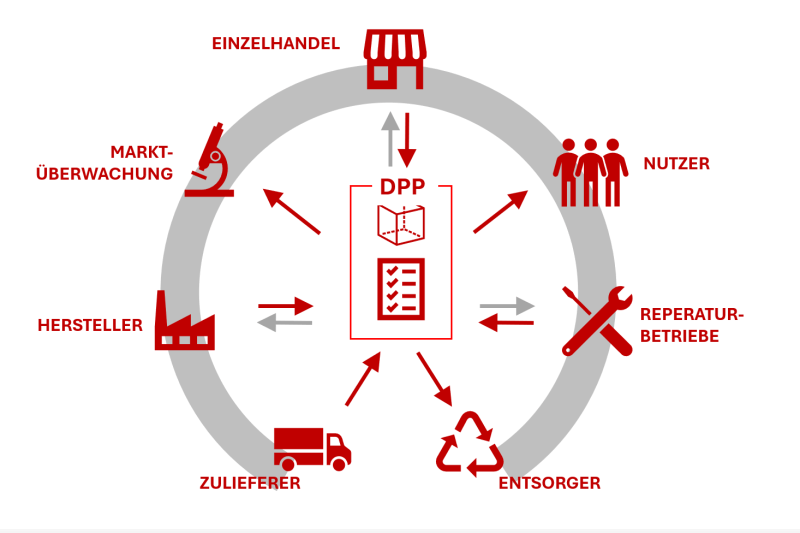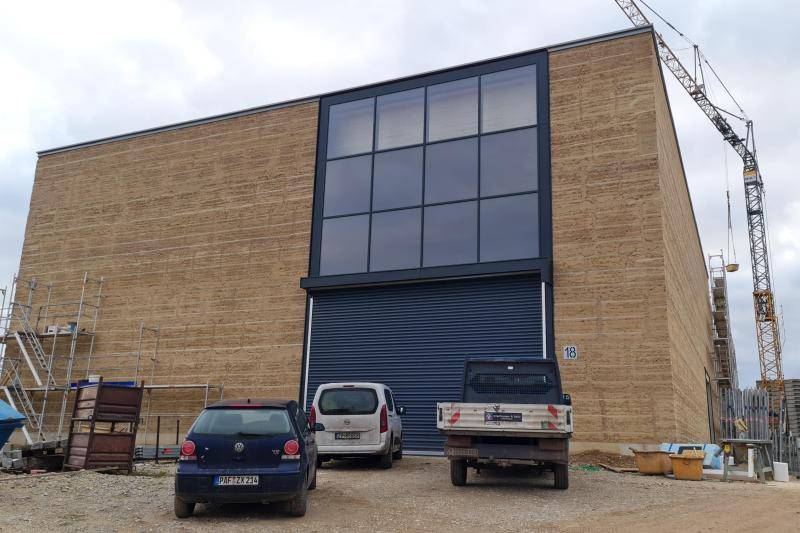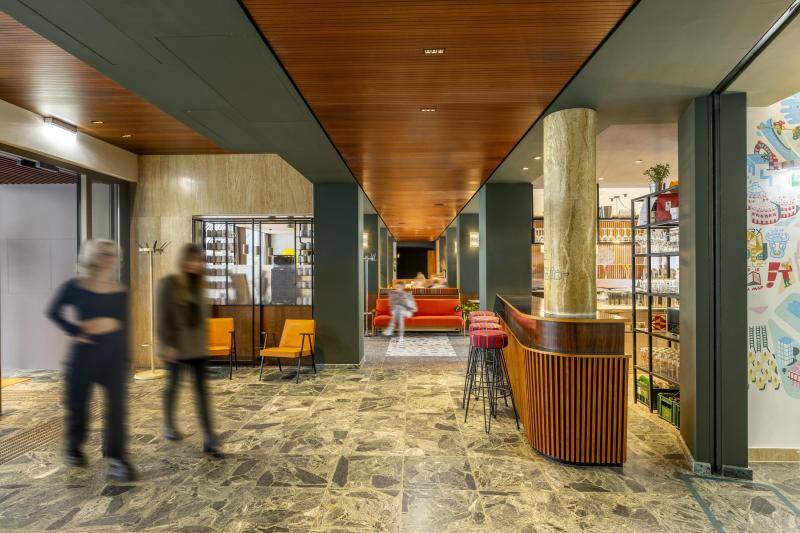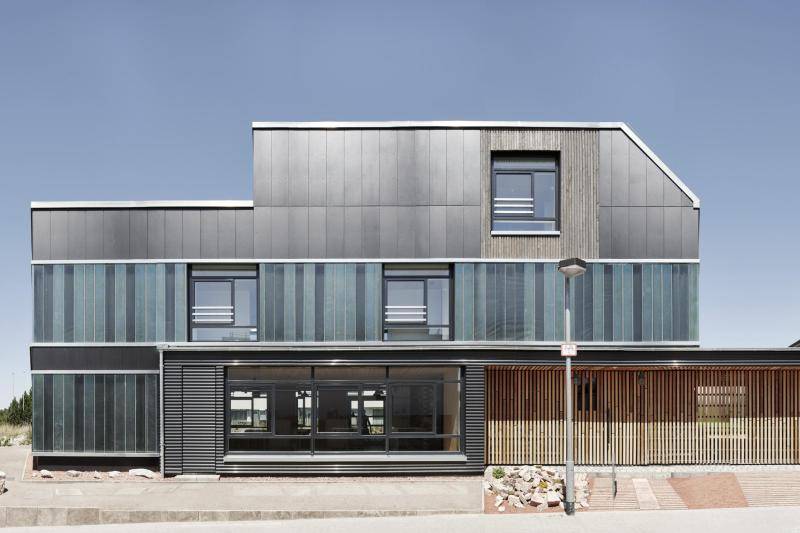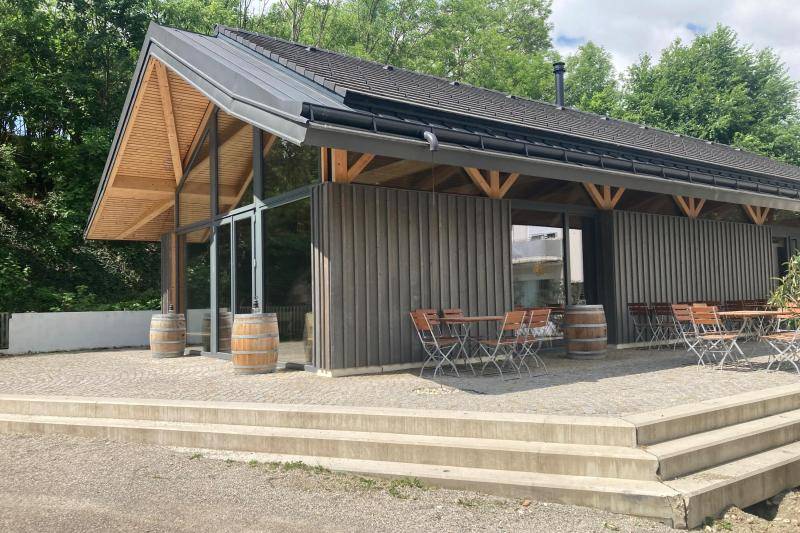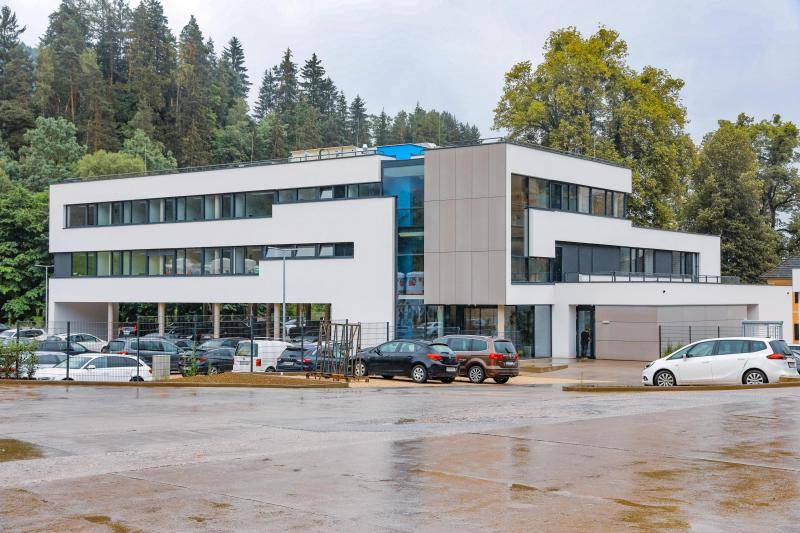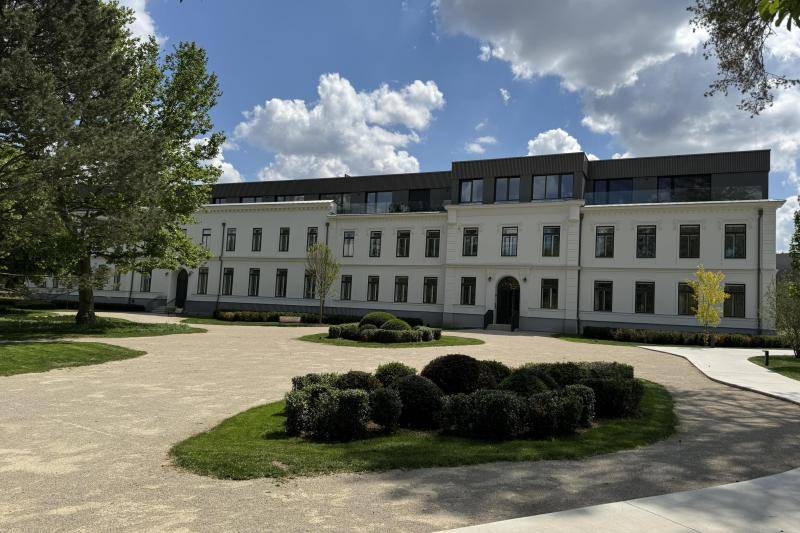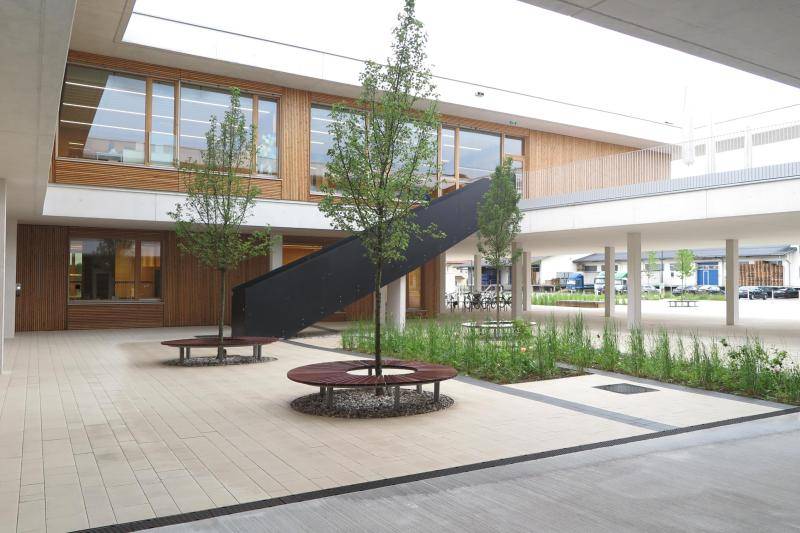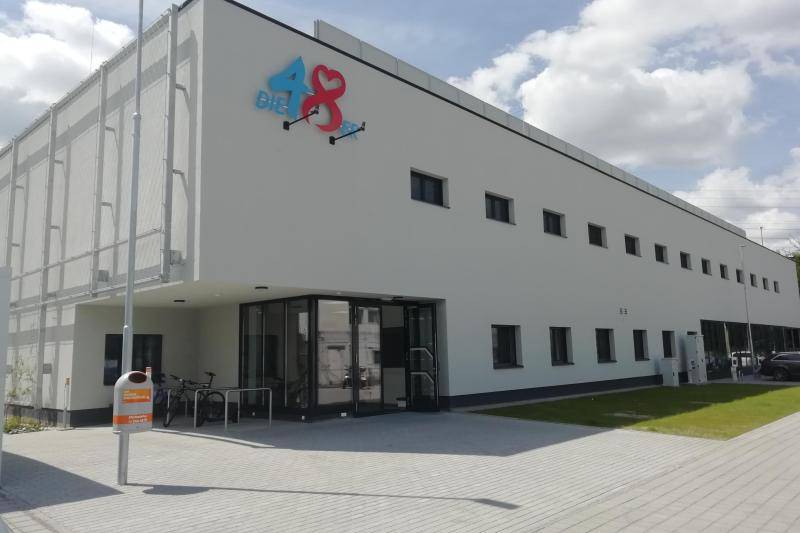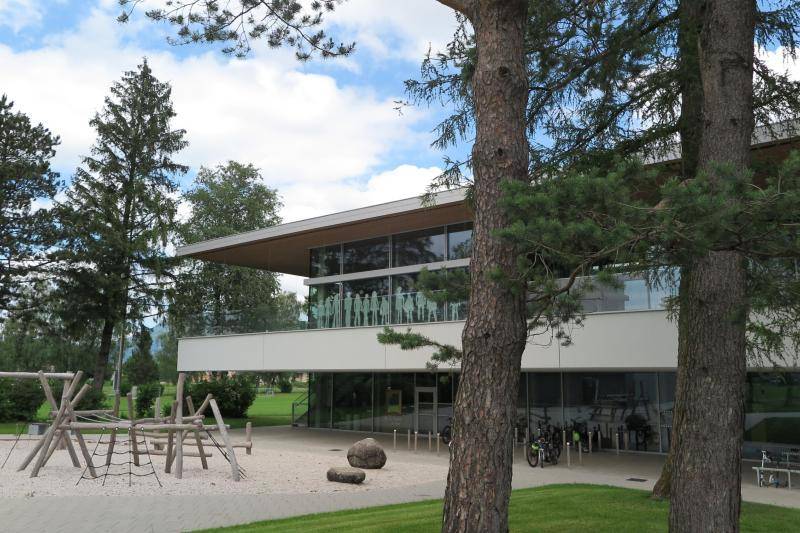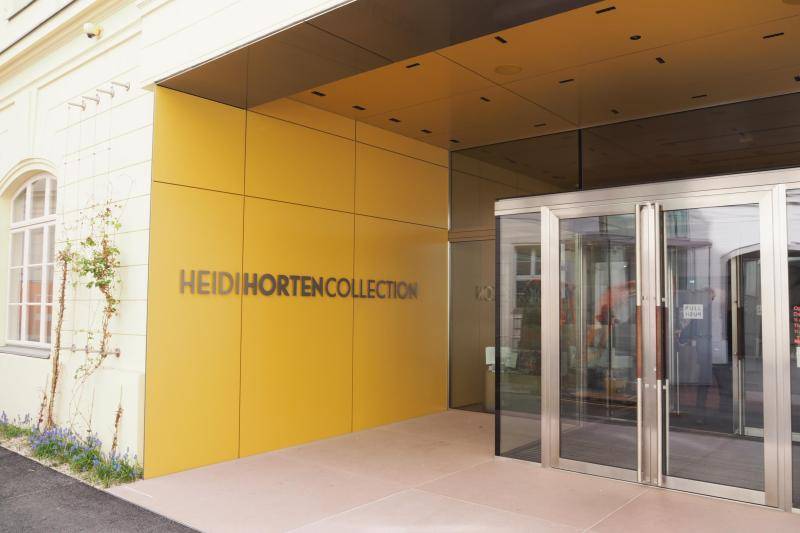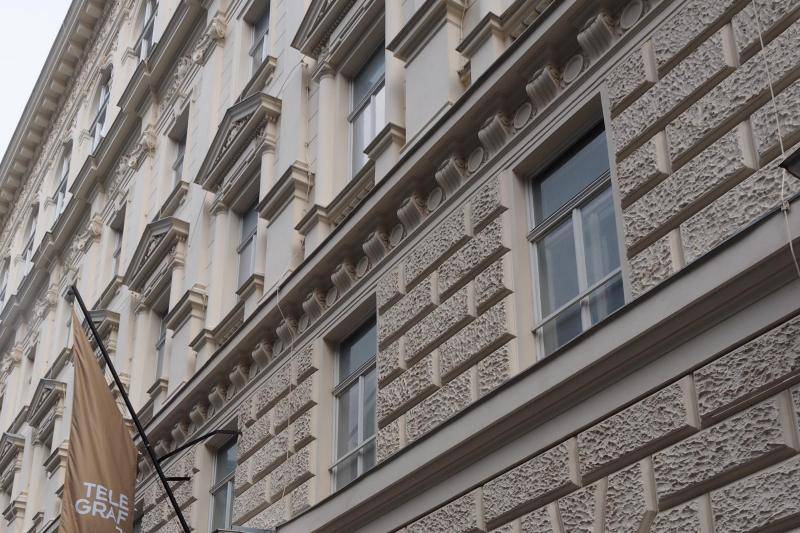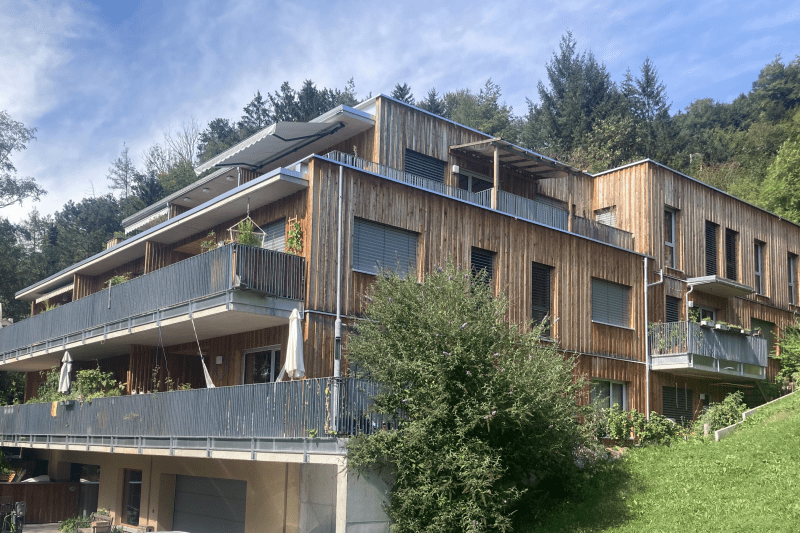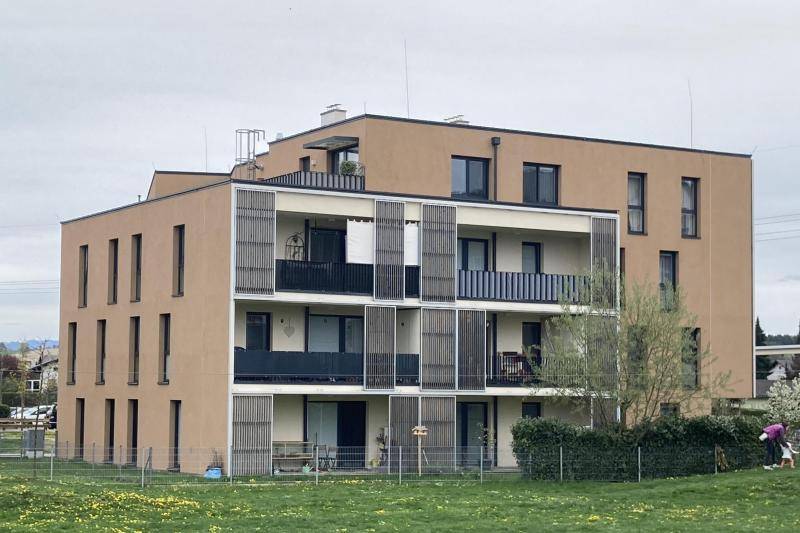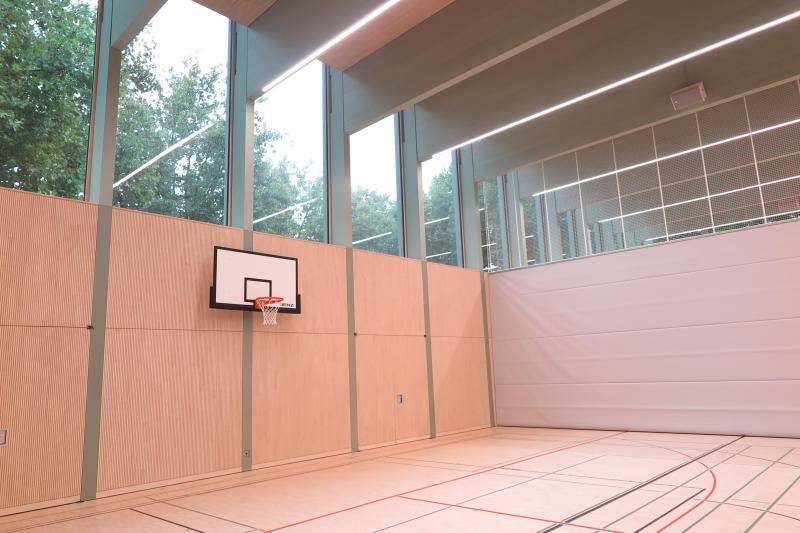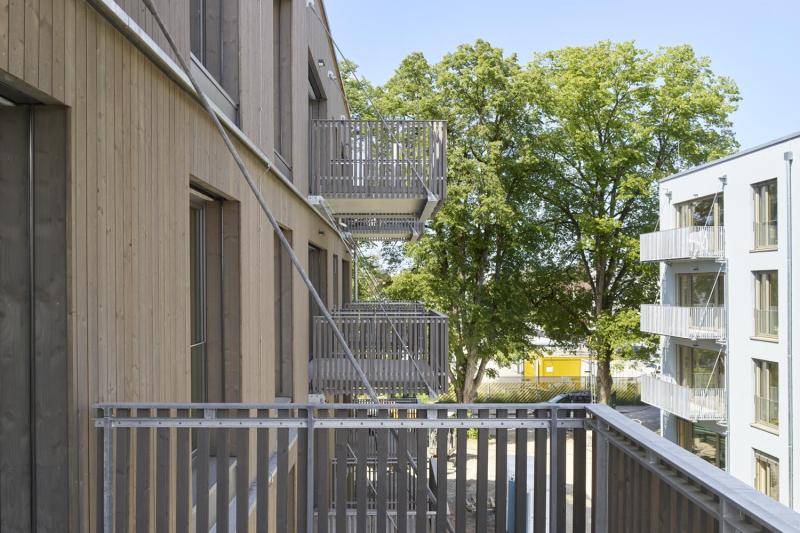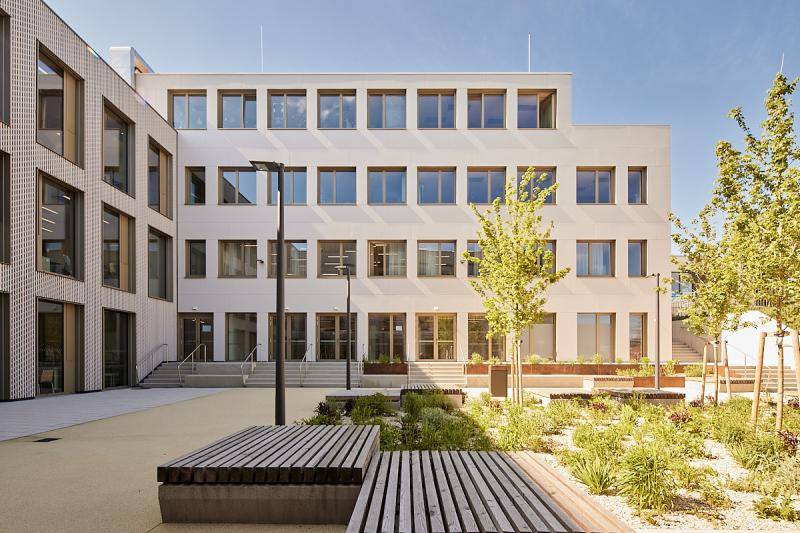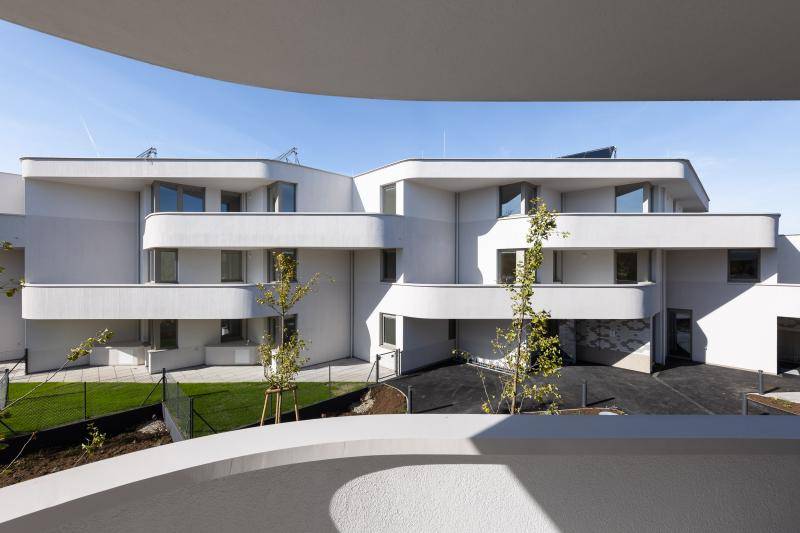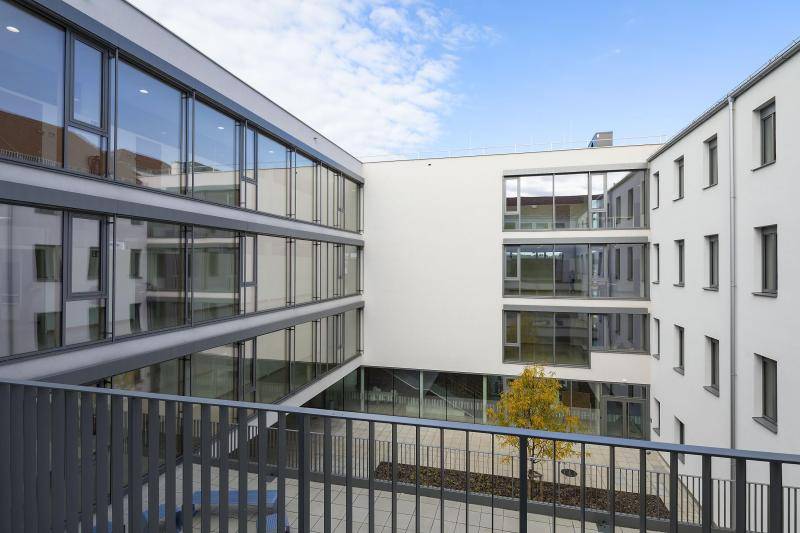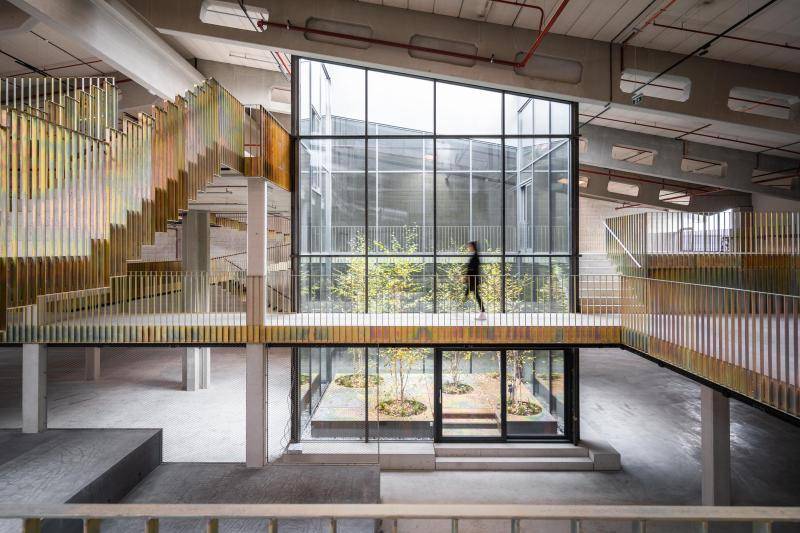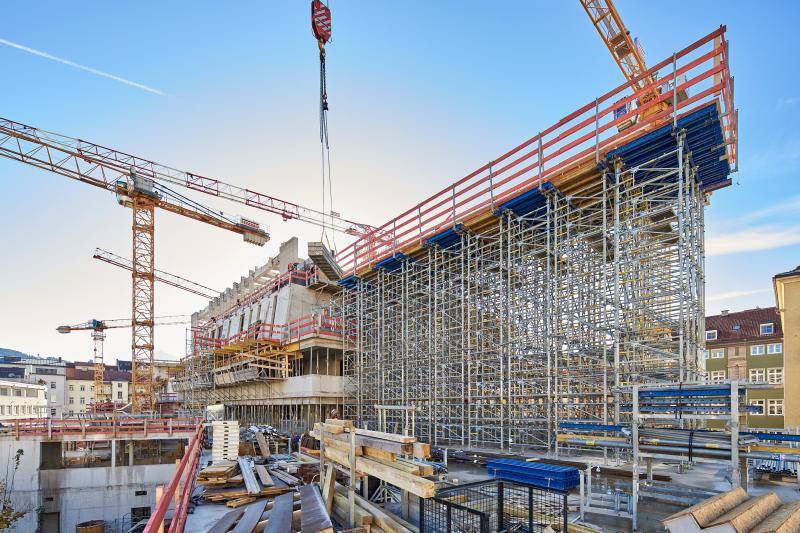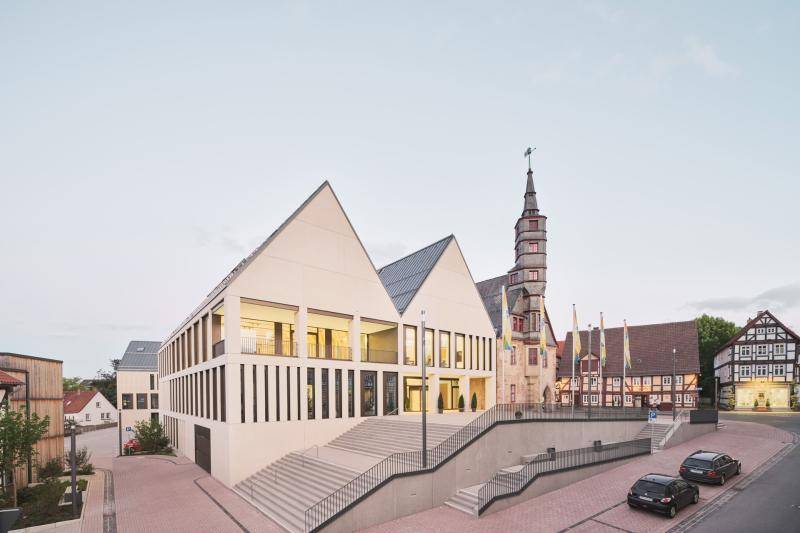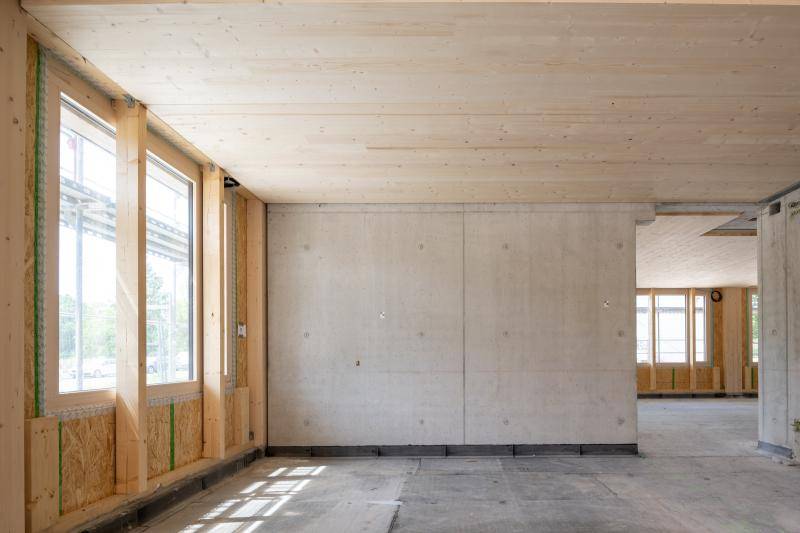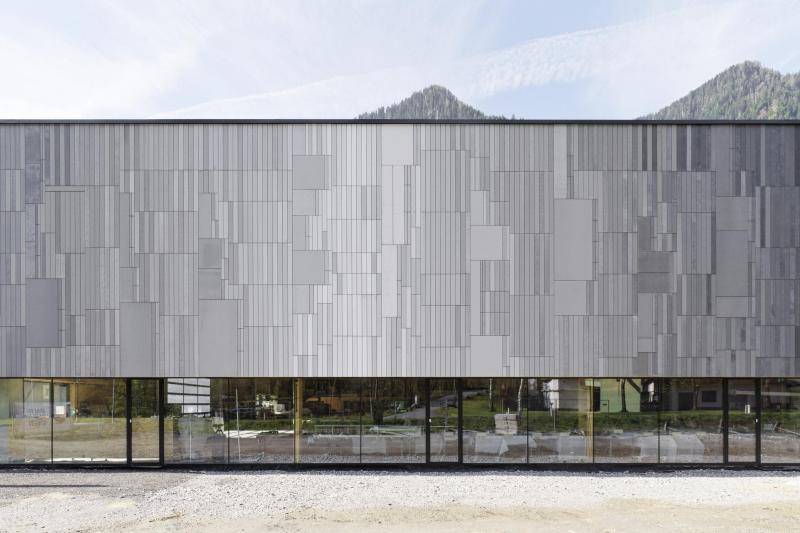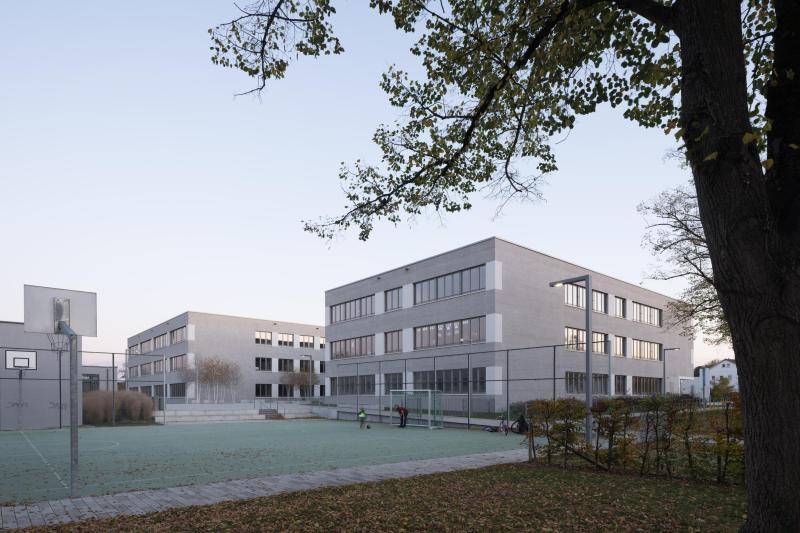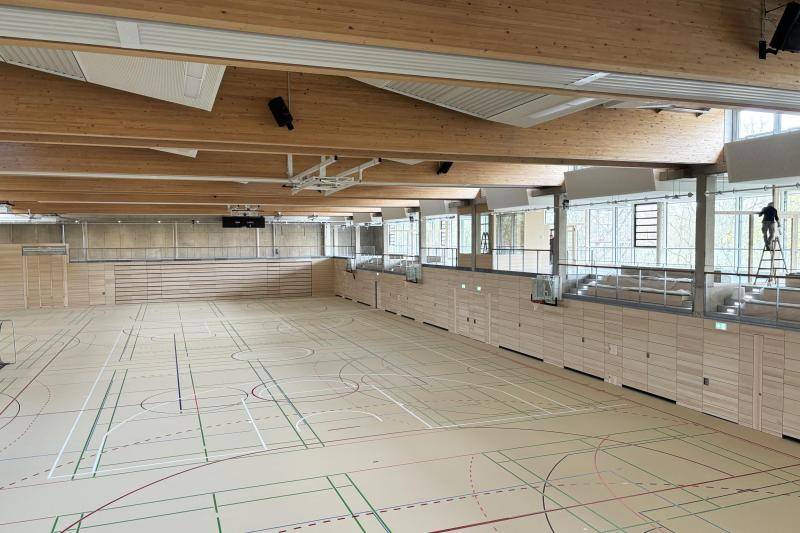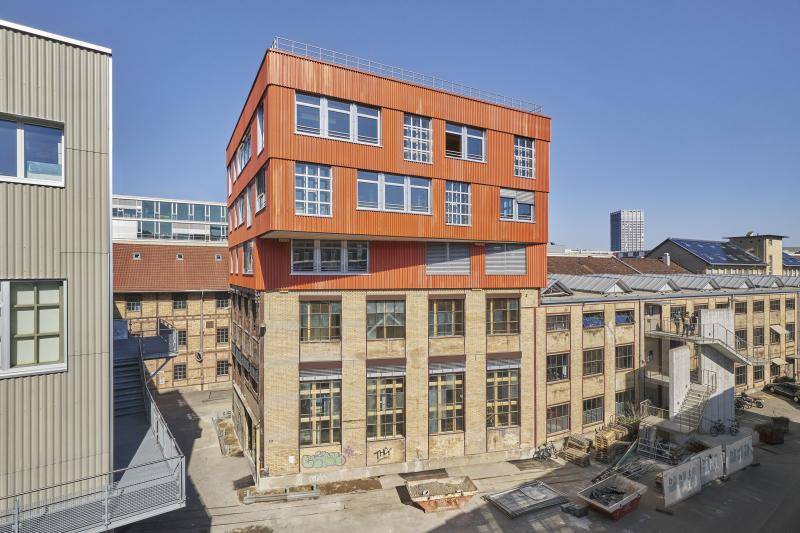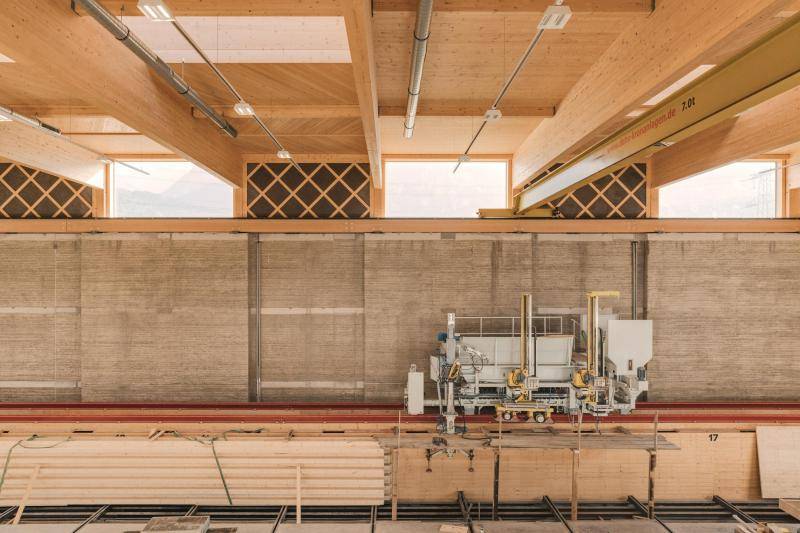Circular economy
The concept of the circular economy aims to reuse and recycle components and building materials in a closed cycle so that little waste is produced in the end. This approach begins with the planning of products and constructions and affects the entire life cycle of a building. The map shows realised projects in the areas of recycling, reuse and dismantling.
ZIN - Brussels
The ZIN project developed by Befimmo comprises the renovation of Towers 1 and 2 of the Brussels World Trade Centre in the north of Brussels. After dem...
Straubenhardt fire station
The new fire station in Straubenhardt was designed according to Cradle to Cradle principles. Many measures were incorporated into a holistic concept f...
Coca-Cola plant
Through environmentally friendly manual dismantling and the optimal synergy of re-use and recycling, €100,000 in sales were generated during the disma...
Glass Palace
The second construction project, the former data center of the City of Vienna, at Rathausstrasse 1, was completed for BUWOG in August 2017. In 3,450 o...
MedUni Campus Mariannengasse
The Medical University of Vienna and the Federal Real Estate Company are building the new MedUni Campus Mariannengasse on the site of the former Wien ...
Former VHS Stöbergasse
Between July and September 2020, BauKarussell carried out the utilization-oriented dismantling of the former bfi and VHS site in Vienna-Margareten on ...
VILLAGE IN THE THIRD
In Vienna's 3rd district, an inner urban expansion area is being developed on an area measuring over 11 hectares. The location of the site offers pote...
Ferry-Dusika Stadium Vienna
The new Vienna Sports Arena with several multifunctional halls and areas was built at the Ferry Dusika Stadium site in 2023. The project was implement...
Vorklinik Graz
BauKarussell 2023 was commissioned with the demolition of the former pre-clinic in Graz over a period of seven months. Between February and August, th...
HORNIG AREAL
On behalf of the Austrian Housing Association, BauKarussell planned the dismantling of the former J. Hornig coffee roastery in Graz in 2023 with a cle...
Hensel barracks Villach
The Austrian federal army commissioned BauKarussell with the use-orientated demolition of the Hensel barracks in Villach. Together with Schindel &...
The living shelf
The residential project by architecture firm FAR frohn+rojas in Berlin-Moabit focuses on the circular economy by using durable, reversibly installed p...
CRCLR-Haus
The CRCLR building in Berlin-Neukölln was remodelled in 2023 in line with the principles of the circular economy. The focus was on recycling and reusi...
School Köln-Deutz
The Brügelmannstraße secondary school in Cologne-Deutz is one of the most sustainable schools in Germany. It consists of flexible cluster areas that p...
Richardstraße primary school
Richardstraße primary school in Hamburg responded to growing pupil numbers with a three-storey extension. The new building, which cost 5.7 million eur...
Digitaler Produktpass für das Bauwesen
Process-related data provision for the construction industry - Objective: Making taxonomy, life cycle assessment rules, cost auditing and construction documentation manageable for small and medium-siz
Alberzell production hall
The construction company Irrenhauser & Seitz has built an innovative production hall in Alberzell that emphasises recyclability. The aim was to ut...
Magdas Hotel
As part of an extensive conversion, a former priest's residence was transformed into a hotel with 85 rooms, a restaurant, a pub garden and a guest gar...
Santa Elisabetta House for senior citizens
The Villaggio Santa Elisabetta nursing home is located between Bressanone and Varna, in northern Italy. The facility aims to achieve sustainable devel...
Recyclinghouse Hannover
The motto ‘waste nothing’ applies particularly to this house in Hanover: the recycling house aims to significantly reduce waste and grey energy in the...
Topics from the Circular economy category that are currently in demand
Heating & Cooling Storage Mass Media Library Construction industry Building materials Funding Innovations Affordable housing Education / Training Partner/NetworkProjects from the category Circular economy
Winery Michael Bauer
The new wine tavern of the Michael Bauer winery on the outskirts of Mitterstockstall near Kirchberg am Wagram is well hidden in the middle of a courty...
Alpacem Headquarters
With the new Alpacem headquarters, a prime example of the decarbonization of construction was achieved - with CO2-optimized concretes and component ac...
Floriette residential complex
The historic north façade of this old building was extensively renovated in 2022/23 and became the face of the new “Floriette” building.
21 residentia...
Primary school Wals-Siezenheim
The new building for the primary school, after-school care and other communal functions forms an anchor point for the entire town in the no-man's land...
MA 48 Crew building
The MA 48 team building in Vienna-Simmering is the first building to use recycled concrete. The recycled content in the concrete is around 15 - 20 per...
Anif elementary school
The Anif elementary school used 1,067 cubic meters of recycled concrete, which accounts for around 32% of the total in-situ concrete. The recycled con...
Adnet elementary school
A new elementary school is being built in Adnet over a planned construction period of two years. The current school will be renovated and extended usi...
General refurbishment of parliament
Following its general refurbishment, the Austrian Parliament is the first historic building to receive the “klimaaktiv Gold” certificate and is a true...
Heidi Horten Museum
The former chancellery building of Archduke Friedrich, built in 1914 in Hanuschhof, was completely gutted to create 1500 square meters of space for He...
Telegraf 7 Office
Vienna's Lehargasse 7, close to the Naschmarkt, is home to the former telephone exchange of the Imperial and Royal Post and Telegraph Directorate. Pos...
Wohnbau Leyserstrasse
The ‘Rosalie’ residential building in Penzing is part of a neighbourhood development at the Theodor Körner barracks. The barracks park was made access...
Housing project „GeWoZu“
The GeWoZu project combines 12 individual flats for 20 adults and 13 children in a sustainably built terraced house. The use of recycled materials suc...
WSB- Residential complex Wieselburg
The residential complex on the northern edge of Wieselburg consists of four buildings: an arcade type with twelve units and three point blocks with a ...
District sports hall Wangen
The new three-court sports hall in Wangen was built to replace the ‘old sports hall’, which was around 70 years old, between the north and south vocat...
Residential building St. Vincent
On the site of a former nursing school in Wangen, the Vinzenz-Quartier was built in 2024 with a total of 122 residential units in six buildings. Three...
Konrad Lorenz Grammar School
The Konrad-Lorenz-Gymnasium in Gänserndorf, the largest building in the town, was modernised and extended to provide space for 1,000 pupils. A recycle...
ASG - Residential complex
The ASG residential complex on the northern edge of Vienna, close to the Marchfeld Canal, comprises two buildings with a striking saw-tooth structure ...
Extension and refurbishment BG/BRG Mattersburg
The secondary school in Mattersburg was renovated and extended. An atrium-shaped extension with 18 classes, a new main entrance, cloakrooms and dining...
Trade centre 16
The "Trade centre 16" in Bergheim near Salzburg is a modernised commercial area that originally consisted of the warehouses of the former mail order c...
The Raiqa - the Innsbruck centre quarter
Raiffeisen-Landesbank Tirol AG is building a new headquarters between Südtiroler Platz and Bozner Platz, creating a lively neighbourhood in Innsbruck....
Korbach Town Hall
With the demolition and new construction of the town hall, the current approaches of urban mining and circular construction were trialled in a solid b...
Cube One TU Nürnberg
The first building of the new campus of the Technical University of Nuremberg (UTN), Cube One, has been home to the Executive Board and various depart...
Schönberg estate Schwarzach
Recycled concrete from the demolition of an old office and staff building belonging to the Austrian Federal Forests was used for the new Schönberg hou...
glemm21
In the interior of the new headquarters of Rieder Facades GmbH, numerous elements were reused according to the ‘Reuse and Recycle’ principle, such as ...
Campus Rauner
The old Rauner primary school, a sprawling conglomerate from the 1960s, was largely demolished. In its place, a compact, three-storey building is now ...
Sportpark Ost Regensburg
A new sports centre with an indoor swimming pool and athletics hall is being built near the former Prinz Leopold barracks. Joint planning allows syner...
Eichstätt Service Centre
The district of Eichstätt has had three interconnected buildings constructed on a plot of land where the vocational school workshops used to be. There...
Head building Hall 118, Winterthur storage area
The Abendrot Foundation has erected a shimmering red lighthouse for climate-friendly and sustainable construction on the Sulzer site in Winterthur - c...
Administration building Association for Rural Development
The Association for Rural Development (VLE) Upper Palatinate has realised a pioneering project with the construction of its new administration buildin...
EDEN factory building
The ERDEN factory building is located in the small municipality of Schlins in Vorarlberg - a pioneering project that was specially designed for the pr...
Vienna Patent Office
The European Patent Office in Vienna - located between Belvedere Palace and the Botanical Gardens - is undergoing a comprehensive refurbishment. The b...
Recyclinghouse Hannover
The motto ‘waste nothing’ applies particularly to this house in Hanover: the recycling house aims to significantly reduce waste and grey energy in the...
Santa Elisabetta House for senior citizens
The Villaggio Santa Elisabetta nursing home is located between Bressanone and Varna, in northern Italy. The facility aims to achieve sustainable devel...
Magdas Hotel
As part of an extensive conversion, a former priest's residence was transformed into a hotel with 85 rooms, a restaurant, a pub garden and a guest gar...
Alberzell production hall
The construction company Irrenhauser & Seitz has built an innovative production hall in Alberzell that emphasises recyclability. The aim was to ut...
Richardstraße primary school
Richardstraße primary school in Hamburg responded to growing pupil numbers with a three-storey extension. The new building, which cost 5.7 million eur...
School Köln-Deutz
The Brügelmannstraße secondary school in Cologne-Deutz is one of the most sustainable schools in Germany. It consists of flexible cluster areas that p...
CRCLR-Haus
The CRCLR building in Berlin-Neukölln was remodelled in 2023 in line with the principles of the circular economy. The focus was on recycling and reusi...
The living shelf
The residential project by architecture firm FAR frohn+rojas in Berlin-Moabit focuses on the circular economy by using durable, reversibly installed p...
Hensel barracks Villach
The Austrian federal army commissioned BauKarussell with the use-orientated demolition of the Hensel barracks in Villach. Together with Schindel &...
HORNIG AREAL
On behalf of the Austrian Housing Association, BauKarussell planned the dismantling of the former J. Hornig coffee roastery in Graz in 2023 with a cle...
Vorklinik Graz
BauKarussell 2023 was commissioned with the demolition of the former pre-clinic in Graz over a period of seven months. Between February and August, th...
Ferry-Dusika Stadium Vienna
The new Vienna Sports Arena with several multifunctional halls and areas was built at the Ferry Dusika Stadium site in 2023. The project was implement...
VILLAGE IN THE THIRD
In Vienna's 3rd district, an inner urban expansion area is being developed on an area measuring over 11 hectares. The location of the site offers pote...
Former VHS Stöbergasse
Between July and September 2020, BauKarussell carried out the utilization-oriented dismantling of the former bfi and VHS site in Vienna-Margareten on ...
MedUni Campus Mariannengasse
The Medical University of Vienna and the Federal Real Estate Company are building the new MedUni Campus Mariannengasse on the site of the former Wien ...
Glass Palace
The second construction project, the former data center of the City of Vienna, at Rathausstrasse 1, was completed for BUWOG in August 2017. In 3,450 o...
Coca-Cola plant
Through environmentally friendly manual dismantling and the optimal synergy of re-use and recycling, €100,000 in sales were generated during the disma...
Straubenhardt fire station
The new fire station in Straubenhardt was designed according to Cradle to Cradle principles. Many measures were incorporated into a holistic concept f...
ZIN - Brussels
The ZIN project developed by Befimmo comprises the renovation of Towers 1 and 2 of the Brussels World Trade Centre in the north of Brussels. After dem...


